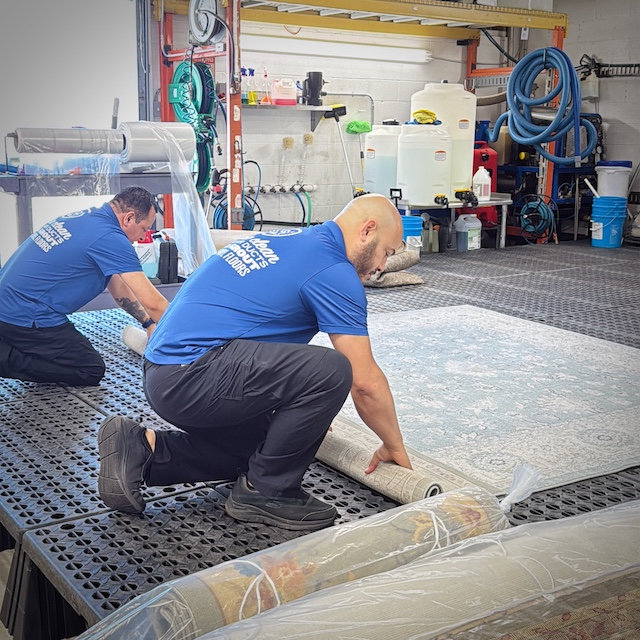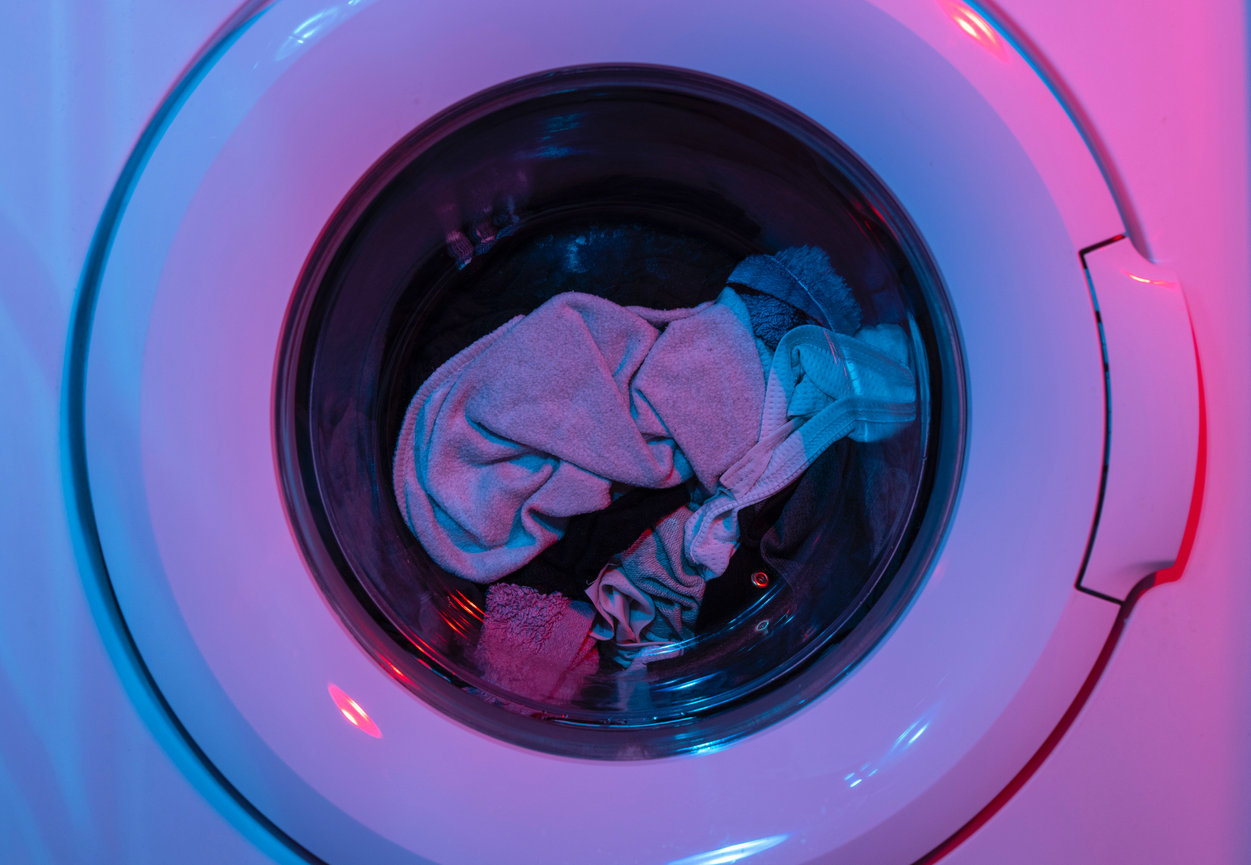Are stubborn tile and grout stains giving you a tough time? From muddy footprints or the aftermath of a surprise kitchen experiment, maintaining gleaming tile floors amidst the chaos of a bustling household can be an uphill task. And let's not forget the baffling case of discolored grout. Was it always this shade of... unidentifiable brown? While tiles may be somewhat forgiving, grout lines tell a different story, especially when they transition into an unidentifiable shade of brown.
Speaking as a mom with two adorably messy children, I get it. And while professional cleaning services can help, they can't quite protect your floors from the everyday adventures of family life.
But fear not! I've stumbled upon an economical, child-friendly, and DIY methods that keeps tiles sparkling and grout lines spotless. Ready to ditch stubborn stains and welcome a cleaner, brighter floor? Let's dive into this easy guide, using simple ingredients you probably already have in your kitchen.
Using the Right Tools for an Effective Clean
We've put together a list of supplies that will help you achieve a fantastic grout cleaning experience. These are the must-haves for successful cleaning. But wait, there's more! We've also included some optional supplies that can take your cleaning game to the next level. These optional tools are designed to make specific tasks easier and more efficient. By having the required supplies and considering the optional ones, you'll be equipped for a thorough and hassle-free grout cleaning adventure. Here is a list of supplies you may need for cleaning grout:
Required Supplies:
-
Water
-
Vinegar
-
Baking Soda
-
Hydrogen Peroxide
-
Dish Soap
-
Oxygen Bleach
Optional Supplies:
-
Spray Bottle
-
2-in-1 Corner & Grout Brush
-
Rejuvenate Extendable Grout Brush Kit
-
Rubber Gloves
1. Mild Porcelain or Ceramic Tile Cleaning with Vinegar
While the traditional water and brush method has its place, our focus here is on achieving the most effective and efficient clean. So, let's bypass that approach and meet your new cleaning partner - vinegar. This common kitchen item, with its natural acidic properties, safely and effectively tackles dirt and mold stains, making it an indispensable ally in our quest for spotless grout lines. Now, let's get to the steps
Step 1: Prepare Your DIY Solution
Combine equal parts of distilled white vinegar and warm water in a spray bottle and shake well.
Step 2: Spray the Grout
Liberally apply the vinegar solution to the grout lines. Let it sit for about 5 minutes to break down the dirt.
Step 3: Scrub Away
Use a stiff brush or an old toothbrush to scrub along the grout lines. The vinegar will have loosened the dirt, making it easy to clean.
Step 4: Wipe Clean
After scrubbing, use a damp cloth to wipe the area clean. If you're dealing with a floor, use a Swiffer Sweeper Dry for a final sweep.
Note: To mask the smell of vinegar, consider adding a few drops of essential oils or citrus fruit peels to the vinegar solution.
2. Mild Natural Stone Tile Cleaning with Baking Soda
If you have natural stone floors, specifically granite or slate, you can safely and effectively use baking soda for mild cleaning. Baking soda, with its gentle abrasive properties, can help remove surface-level dirt and stains without causing damage. It's important to note that this method is suitable for granite and slate, but not for other types of natural stone, such as marble, travertine, limestone, or onyx, which are more sensitive to abrasives. Here are the steps:
Step 1: Create Your Cleaning Paste
Sprinkle baking soda onto the grout lines. Then, carefully add warm water to create a paste.
Step 2: Apply the Paste
Use a brush to spread the paste onto the grout, ensuring its fully covered.
Step 3: Allow Paste to Sit
Leave the paste on the grout lines for about 15 minutes. This allows the baking soda to penetrate and lift the grime.
Step 4: Scrub the Grout
Using a stiff brush, scrub along the grout lines to remove the loosened dirt and stains.
Step 5: Rinse and Dry
Rinse the area with warm water and pat dry. The difference in your grout's appearance should be quite noticeable. Remember, this method is designed to be safe and effective for slate or granite tiles.
3. Deep Tile & Grout Cleaning Trio for White Grout or Light Colored Grout: Baking Soda, Hydrogen Peroxide, and Dawn
When it comes to light-colored tile floors and grout, a dynamic trio of cleaning ingredients can work wonders. Baking soda, hydrogen peroxide, and Dawn dish soap team up to tackle grime, grease, and stubborn stains. Dawn's ability to break down grime and grease pairs perfectly with hydrogen peroxide's effectiveness in whitening white grout. It's important to note that this method is suitable for ceramic, porcelain, glass, and non-stone mosaic tiles. Always perform a spot test, especially on colored tiles, as hydrogen peroxide may have a bleaching effect. Now, let's dive into the steps:
Step 1: Create the Cleaning Paste
In a container, combine ¼ cup of hydrogen peroxide, ½ cup of baking soda, and 1 teaspoon of Dawn dish soap. Mix thoroughly until a consistent paste forms.
Step 2: Apply the Paste
Carefully apply the paste onto the grout lines.
Step 3: Let It Sit
Allow the mixture to sit on the grout for approximately 15 minutes, allowing it to penetrate and break down dirt and stains.
Step 4: Scrub with Vigor
Using a scrub brush, put some elbow grease into the cleaning process, scrubbing the grout lines thoroughly.
Step 5: Rinse and Dry
Rinse the area with water to remove the cleaning mixture, then wipe dry with a towel.
With this DIY cleaning triple threat, your light-colored tile floors and grout will be left gleaming and refreshed.
4. Eradicate Grout Stains: Harness the Power of Oxygen Bleach
Stubborn grout stains or extremely dirty grout can be a challenging issue to tackle, but with the right approach, you can restore the cleanliness and freshness of your tile grout. One effective solution is to use oxygen bleach. Oxygen bleach is known for its powerful stain-lifting properties, making it a great choice for deep-cleaning grout lines. Its oxygen-releasing compounds work to break down and lift tough stains, such as embedded dirt, grime, mold, and mildew. To clean your grout using oxygen bleach, follow these steps:
Step 1. Prepare Area
Ensure proper ventilation by opening windows or using fans. Also, protect the surrounding surfaces, such as tiles or adjacent materials, from any potential contact with the oxygen bleach solution.
Step 2. Dilute Oxygen Bleach
Follow the instructions provided by the manufacturer to mix the appropriate amount of oxygen bleach with water. Use a bucket or container to create the solution.
Step 3. Apply Solution
Use a sponge or brush to apply the oxygen bleach solution onto the stained grout lines. Make sure the grout is thoroughly saturated with the solution. Allow it to sit for 10 minutes.
Step 4. Scrub Grout
After the dwell time, use a grout brush or a toothbrush to scrub the grout lines vigorously. Focus on areas with stubborn stains or heavy dirt buildup. The oxygen bleach will help to break down and lift the stains.
Step 5. Rinse
Once you have scrubbed the grout lines, rinse the area thoroughly with clean water. Make sure to remove any residue or remaining oxygen bleach solution. Wipe away excess moisture with a clean cloth or sponge.
Step 6. Evaluate and Repeat
Assess the cleanliness of the grout lines once they have dried. If any stains persist, you may need to repeat the process or try alternative stain-removal methods.
Wear gloves as a safety precaution. Test the oxygen bleach solution on a small, inconspicuous area of the grout beforehand to ensure compatibility and to avoid any potential adverse reactions or damage.
5. Immaculate Tile Walls: Unleash the Cleaning Power of Mr. Clean Magic Eraser!
When it comes to cleaning wall tiles for backsplashes and shower areas, using the Mr. Clean Magic Eraser can make the task a breeze. The specially formulated Magic Eraser is highly effective at removing dirt and grime from wall tiles. Here are the steps.
Step 1. Activate Cleaning Agents
Run the Mr. Clean Magic Eraser under water until it is thoroughly wet and squeeze it to remove any excess water, ensuring it is damp but not dripping wet.
Step 2. Swipe Away
Gently swipe the Magic Eraser across the grout lines and wall tiles, focusing on areas with visible dirt or grime. Apply light pressure and let the Magic Eraser do its work.
Step 3. Wipe Clean
After cleaning, rinse the wall tiles with clean water and use a damp cloth to wipe away any residue from the Magic Eraser.
What to Avoid When Cleaning Your Tile and Grout
Now, let's discuss what to avoid to prevent grout erosion and maintain the integrity of your tile surfaces. We strongly recommend exercising caution when it comes to following cleaning methods popularized on platforms like TikTok, as they may lack proper safety and effectiveness verification. To safeguard your tile and grout, avoid the following:
1. Acidic and Alkaline Cleaners
Highly acidic or alkaline cleaners can damage both ceramic and natural stone tiles. These cleaners can break down the grout and cause it to crack or discolor. Some natural cleaners, like vinegar or lemon juice, are acidic and should not be used on natural stone tile.
2. Bleach or Ammonia
Prolonged use of bleach or ammonia can discolor your grout. Furthermore, the two should never be mixed together as they create a toxic gas.
3. Abrasive Powders or Tools
Coarse cleaning powders, steel wool, or other abrasive tools can scratch the surface of the tiles, especially those with a glossy finish.
4. Oil-based Detergents
These can leave a residue on the tiles, causing them to appear dull and grimy. They can also break down and discolor the grout.
5. Toilet Bowl Cleaner
Toilet bowl cleaners are specifically designed for toilets and may contain harsh chemicals that can potentially damage tile or grout. It is not recommended to use toilet bowl cleaners on tile surfaces.
6. Excessive Water
Using excessive water, especially on unglazed tiles or on the grout, can lead to water damage, discoloration, or loosening of the tiles. Exercise caution and avoid over-saturating the surfaces.
By avoiding these practices and being cautious of cleaning methods popularized on platforms like TikTok, you can protect the longevity and beauty of your tile and grout.
When to Call in a Professional Company for Help
While these DIY solutions are excellent for regular upkeep, remember that there's no replacement for a professional deep clean. Hiring a professional not only ensures a more thorough, deep-down clean, but it also saves you time and effort, which as busy homeowners, parents, or pet-owners, is incredibly valuable.
Hernandez Carpet Cleaning offers top-notch, affordable services to give your tile and grout the royal treatment they need every so often. Our expert team uses high-grade equipment and specialized techniques that can get out even the most stubborn grime, restoring the shine to your floors and saving you the hassle of doing it yourself.
When it's time for that much-needed professional clean, don't hesitate to book an appointment at HernandezCarpetCleaning.com/schedule-online.
—
Sources:
https://www.homemadesimple.com/bathroom/how-to-clean-grout/
https://www.certifiedcleancare.com/grout-cleaning/how-do-professionals-clean-grout/
https://www.lovetoknow.com/home/cleaning/homemade-grout-cleaner
https://www.eatingwell.com/article/7898425/tiktok-hack-grout-cleaning/
https://www.cleancorp.biz/blog-6-grout-cleaning-hacks/
Images:
Photo by cottonbro studio: https://www.pexels.com/photo/black-and-white-spray-bottle-4107120/
Photo by Karolina Grabowska: https://www.pexels.com/photo/set-of-skin-care-products-in-contemporary-bathroom-4239013/
Photo by Kaboompics .com: https://www.pexels.com/photo/flour-in-a-jar-5765/
Photo by Markus Spiske on Unsplash





0 Comments